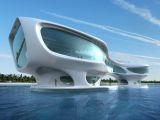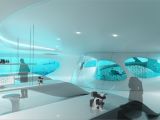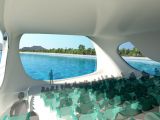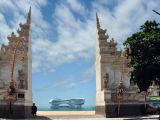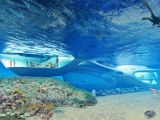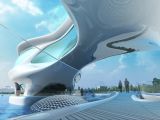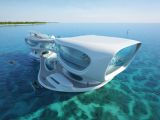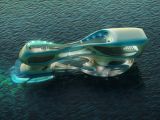The great thing about international design competitions is that they always bring the best of people, challenging their creative powers of interpretation and expression.
So is the case with a contest held for a marine research center in Bali, Indonesia, which asked entrants to submit their architectural interpretation of the structure of tsunami waves.
After spending some time studying these natural phenomenons that usually cause severe damages to coastal regions, the architects at Solus4 brought their own project to the table.
There are various factors that generate tsunami waves, namely landslides, meteors, and earthquakes. Considering the fact that, of the aforementioned events, underwater earthquakes are the most frequent in Indonesia, the design team at Solus4 decided to use them as the conceptual basis of the architectural proposal.
Thus, the initial elliptical pattern and cross section diagram of the tsunami wave have been integrated into the shapes of the building.
Projected to be located 150 meters off the shore of Kuta beach, their 2500 square-meter facility is a quite imposing fluid structure designed to minimize its impact upon the natural aquatic environment it is built in.
What’s more, the Marine Research Center you see in the adjacent images is designed to be extremely energy efficient while providing visitors and scientists with a direct visual connection to the ocean.
The program comprises underwater labs, scientist bedrooms and aquatic garden to sea water pool, swimming pool terrace, bar and an auditorium.
“This project represents a new typology for stationary in-water based projects reached by boat, which in the past have been mostly relegated as merely work, non-destination platforms which do not take into account the design possibilities that the in-water sites present,” the team says.
In addition, the Marine Research Center in Bali designed by Solus4 aims to also serve as an international model for modern sustainable design.
Specifically, the facility uses on-site renewable energy resources through its integration of such technologies as tidal wave energy generation, natural ventilation, rain water collection, passive solar energy, low E glass, and high reflectance fiber glass materials.
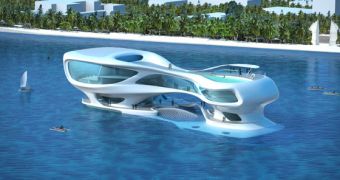
 14 DAY TRIAL //
14 DAY TRIAL // 
